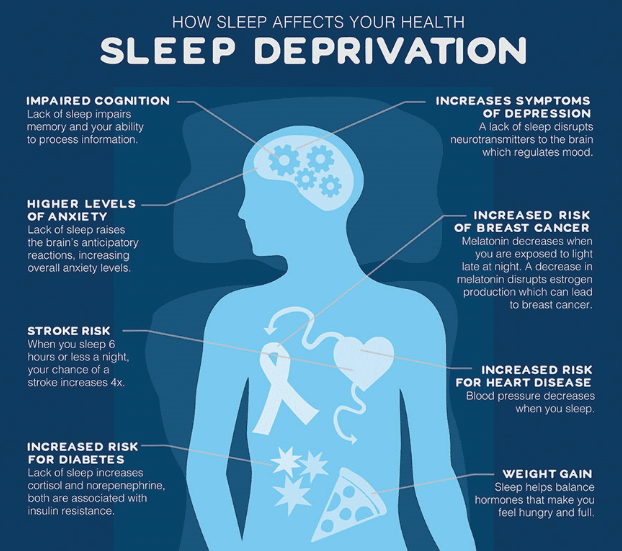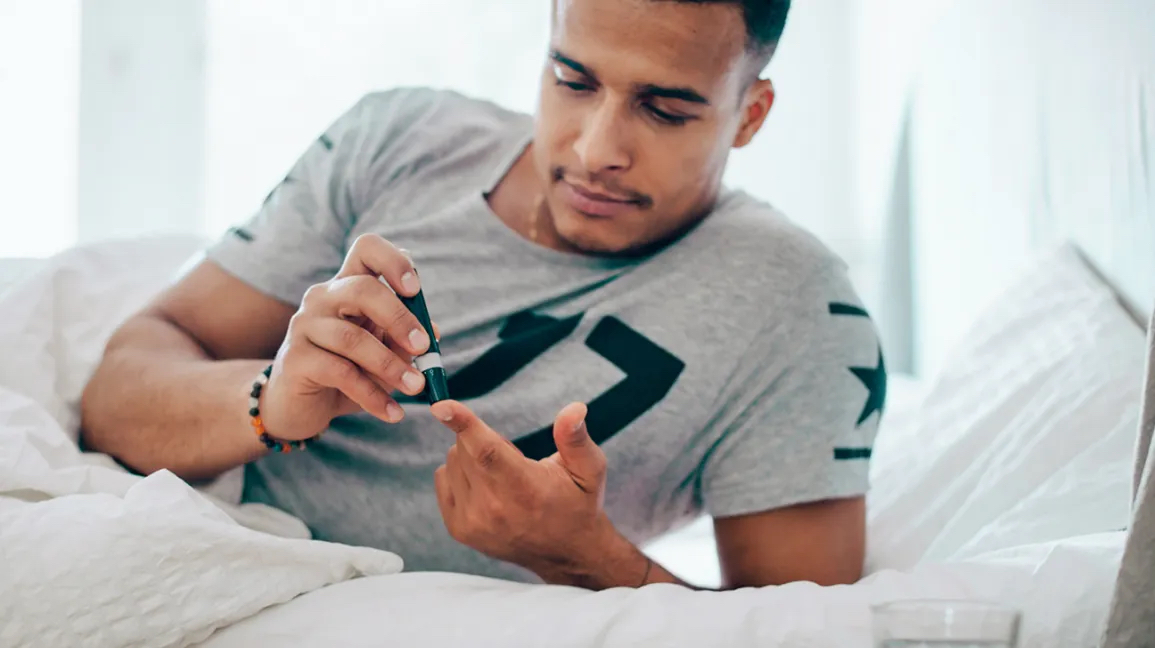
Research has suggested that genetics, and poor lifestyle choices, can both become an impetus behind chronic conditions like type 2 diabetes and insulin resistance.1Considering the influence of environmental factors upon genetic expression, which was covered in this author’s previous posts, the following will explore another relevant measure that could help nutritionists and researchers determine another driver behind insulin resistance; poor sleep.

Inadequate sleep could be considered less than 7 hours per night and Gallicchio and Kalesan2found associations between health biomarkers and sleep duration. The authors speculated that less than optimal sleep might cause unfavorable cardiovascular and metabolic outcomes.2(148)Furthermore, a systematic review by Gallicchio and Kalesan2(148)indicated that increased sympathetic nervous system activity, higher cortisol levels, impaired glucose tolerance, higher cortisol levels, chronic inflammation and impaired glucose tolerance were also associated with sleep deprivation.

Other experimental research has supported such associations and indicated that restricting sleep to as little as 4 hours a night for only 2 nights reduced glucose tolerance by 40% and the acute insulin response by 30% in healthy subjects.3 Thus, it is imperative to develop interventions to improve both sleep quality and duration. As mentioned in previous discussions, exposure to blue light (<550 nm) from smartphones, flat screen televisions, and overhead lighting can stimulate photosensitive fibers in the eye and reduce the secretion of melatonin; a key hormone which induces and regulates sleep.4 Wearing amber colored glasses approximately 3 hours before bed has associated with reports of better sleep quality.4(1602)

In conclusion, research has indicated that genetics, and poor lifestyle choices, can both become an impetus behind chronic conditions like type 2 diabetes and insulin resistance. Environmental stressors to include poor sleep quality and duration, can negatively affect such biomarkers and potentially expedite the pathophysiological process amongst individuals genetically susceptible to the aforementioned conditions. Implementation of simple and cost-effective interventions, like amber colored glasses, may facilitate improved sleep hygiene and blunt genetic predispositions towards poor blood glucose regulation.
Reference
1. Lee RD, Nieman DC. Nutritional Assessment. 6th ed. New York, NY: McGraw-Hill; 2013.
2. Gallicchio L, Kalesan B. Sleep duration and mortality: A systematic review and meta-analysis. J Sleep Res. 2009;18:148-158. doi:10.1111/j.1365-2869.2008.00732.x.
3. Donga E, Diijk MV, Diijk GV, et al. A single night of partial sleep deprivation induces insulin resistance in multiple metabolic pathways in healthy subjects.J Clin Endocrinol Metab.2010;95(6):2963-2968.doi:10.1210/jc.2009-2430.
4. Burkhart K, Phelps JR: Amber lenses to block blue light and improve sleep: A randomized trial. Chronobiol Int.2009:26(8):1602-1612. doi:10.3109/07420520903523719.
-Michael McIsaac
